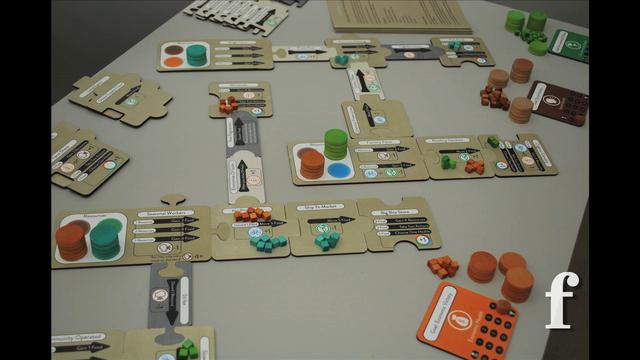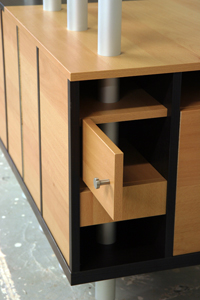AA: You’ve worked at so many different academic institutions, what brought you to SAIC in 1986?
TJ: Well, I’ve been lucky. I’ve had the opportunity to be president or director of three of the best schools in art and design in the world — how amazing is that? I was at Glasgow, in Scotland, which is a fantastic school, absolutely amazing school, was there and got a call said that the presidency of SAIC was going to come up and would I like to have a chat? So I came. It was 23 degrees below zero, the middle of the winter — I started to think of Glasgow, Scotland as the tropics, because it wasn’t anywhere near as a cold. A brutal, freezing cold, with wind and snow and it was just awful. But I loved Chicago, I thought it was just terrific. So when I was offered the opportunity to come here, I left Glasgow and came to Chicago as president. I was appointed in 1985, came in 1986, then I was here until 1992, when I was asked to become director of the Royal College of Art in London. So I went to the Royal college and was there for five years, when Chicago asked if I would like to come back to become president of the School and, jointly with Jim Wood, the director of the museum, that we would be the co-chief executives of the Art Institute. So I came back and have been here since 1997.

AA: How does SAIC differ from the other schools at which you’ve taught?
TJ: SAIC has changed dramatically since I came. When I came here for the interview in 1985, we were in one building: Columbus Drive. Everything we did was in that one building. So the whole of what is now the Flaxman Library and the MacLean slide library was crammed into what is now the Betty Rymer Gallery. It was crazy — there was no room. To go and get a book in the library was often a very intimate experience — you had to sort of do a vertical limbo and shuffle past people to get at things. I came to the conclusion very quickly that we couldn’t go on like this — and it was far too localized, too regional; it was almost parochial. We developed a strategic plan which essentially said we needed to have more space, so we bought what you now know as the Sharp building in 1988. It was the YWCA; so we bought the building in a semi-demolished condition and started to expand.
At the same time, we started thinking about the nature of the student body. I strongly believe that art is an international language, I think that design is a global currency, I think it’s critical for students to be able to work alongside people who come from an utterly different culture, who speak a different language, grew up in a completely different way, because that’s the way the world is. We felt very strongly that we needed to diversify the enrollment — it needed to be more international and there needed to be more academic programs. We grew dramatically. When I came to the School there were 700 students, and now there are 3600 — international students were below 1%, and now it’s 20%. We grew from one building, which I think is a 175,000 square feet, to our current holdings of one and a half million square feet. We bought the Sharp building, then we bought 112 S. Michigan [MacLean building], then I went away and came back, and then we developed an initiative with parents and students to discuss what was lacking in the school: and the one thing everyone said was residence halls.
No one was worried about the strength of the academic program, but people said students are living further away and we need to have students downtown. When that happened, the school changed. We went from being a commuter school to a school with community, and that’s changed the culture of the school, too. Then we bought 7 W. Madison, which is going to become Jones Hall — I’m very touched by that, so then we bought a piece of land at a corner of Randolph where there was a really dubious restaurant where you could get a steak and a baked potato for $3 — I never asked where the meat came from. There was a very awful wig shop, and a pawn shop, all on this corner. We demolished all that, and then leased that space to Borders Books and put the new Gene Siskel Film Center in — the film center was originally in the auditorium of the Columbus Drive building. Everything was in that building.
AA: Did that affect enrollment?
TJ: Absolutely, and academic programs. How could you develop an academic program? You could have the best ideas in the world but there was no where to go — it was just awful. We had to have a development plan and we needed to raise some money. We’re very fortunate to have a good board and good board chairs, who said, “This is really the moment where the School needs to grow.” Then we had the two dorms, then we started taking over Carson Pirie Scott with the Sullivan Building and that started to expand. Finally, we get great gallery space, that was my last project for the school, and now a student center.








[…] if you don’t like my art, the website is […]